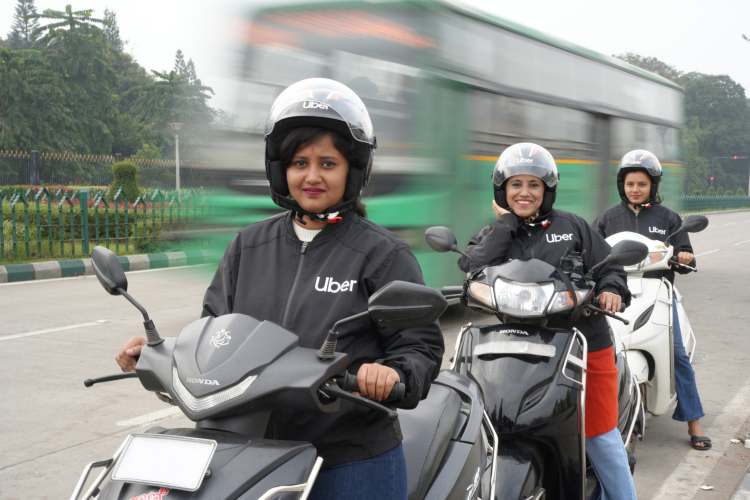
Women in ride-hailing services: From the yellow Ambassadors of Kolkata to Mumbai’s black-and-yellow Fiats, taxis have long been fixtures of India’s urban landscape. Yet, even today, it is rare to see a woman at the wheel. Fewer than 1% of drivers in India’s taxi and delivery sector are women—a statistic that reveals deeply entrenched structural and cultural barriers to female participation in traditionally male-dominated professions.
India’s female labour force participation rate (FLFPR) has historically lagged behind that of peer economies. According to a study by Taskmo, women account for just 28% of the country’s total labour force. Although the FLFPR has improved—from 23.3% in 2017–18 to 41.7% in 2023–24, as cited in the Economic Survey—headline figures mask the persistent exclusion of women from sectors such as transport and logistics.
READ I Why India’s rich and famous are moving abroad?
Global pattern with local constraints
Globally, transportation remains a male stronghold. In New York City, just 1% of yellow cab drivers are women. The figure stands at 3% in the UK, according to British government data. The International Finance Corporation (IFC) noted in a 2018 report that while women customers across countries often feel safer with women drivers, actual female participation remains limited.

Some digital ride-hailing services have made inroads. For instance, women account for 4% of drivers at Gett Inc. (operating in Britain, Israel, and Russia). In the U.S. and Canada, 20% of Uber’s drivers were women, according to the same IFC report. These numbers, though modest, far outpace India’s.
Barriers that run deep
For women in India, the barriers are more than just logistical. They include concerns about personal safety, the absence of flexible working arrangements, limited access to skills development, poor infrastructure, and rigid societal norms. Wage disparities exacerbate the problem. Women in India earn roughly Rs 40 for every Rs 100 earned by men for the same work—a 60% gender pay gap. According to the World Bank, if India raised female labour participation from 35.6% to 50%, GDP could increase by 1 percentage point.
India is no stranger to women-only taxi services. Over the past decade, several efforts—Delhi’s Sakhi Cab, Mumbai’s Viira Cabs and Priyadarshini Taxi Service—sought to promote women drivers and serve female passengers. These ventures combined safety with empowerment and briefly enjoyed public attention and international praise. Similar examples emerged elsewhere: in Kenya, the An Nisa app connects women drivers and riders; in Egypt, Pink Taxi launched in 2015 as a women-only service.
Yet in India, most of these ventures struggled to scale. Permits expired, investments dried up, and operations wound down.
Women in ride-hailing services
The reasons are telling. For many families, taxi driving remains an undesirable career for women—associated with unsafe hours, social stigma, and perceived lack of dignity. On the customer side, both men and women are often reluctant to ride with women drivers, especially at night or in unfamiliar areas. This hesitation is rooted in stereotypes about driving skills and even character.

Though women can obtain commercial driving licences without much difficulty, companies and aggregators continue to prefer hiring men. As a result, female participation remains stuck below 1% in ride-hailing and delivery platforms in India. Globally, the average is closer to 10%, per ILO data from 2021. India’s delivery sector is marginally better off. TeamLease’s Employment Outlook (H2 2018–19) reported that around 68,000 women were employed as delivery workers, versus a global average of 17% female participation.
Unlike well-funded tech aggregators, most women-led taxi ventures have been bootstrapped, depending on government schemes or donor grants. Private investors remain wary, citing low margins and limited scalability. Without capital, these services have struggled to invest in fleets, technology, or brand-building—all essentials in the competitive mobility market.
Rethinking the strategy
Shift social attitudes: Public campaigns must normalise the image of women taxi drivers. Role models need to be celebrated. Awareness efforts must target populations most likely to take up driving as a livelihood.
Upgrade security infrastructure: Apps should incorporate SOS features, helplines, and real-time tracking. Pick-up zones must be well-lit. Public infrastructure—clean toilets, drinking water, weather-proof shelters, and childcare—must evolve alongside workforce diversification.

Tailor financial products: Women-specific schemes such as lease-to-own models, subsidised loans for driver training and vehicle purchase, and microinsurance will be key. Brazil’s Lady Driver raised $2.5 million by targeting this niche—offering better pay and safety for women drivers and passengers.
Expand skills beyond driving: Training should include defensive driving, vehicle maintenance, digital literacy, financial management, and strategies to deal with harassment. Partnerships with NGOs, government agencies, and aggregators can build such comprehensive programmes.
Incentivise aggregators: Ride-hailing firms should set minimum hiring thresholds for women, offer flexible schedules, and tailor incentives to attract and retain female drivers. They must go beyond optics and commit to inclusion through business strategy.
More than a gender issue
Southeast Asia provides instructive case studies. Women-led ride-hailing services collectives and aggregator-supported initiatives there are experimenting with models to address precisely the constraints Indian women face. Their experiences could shape smarter Indian policy.
The case for more women behind the wheel is not just about representation. Studies suggest that women drivers are generally safer, more compliant with traffic norms, and more cautious under pressure. Their increased presence can make the transport system more empathetic, inclusive, and reliable.
More broadly, putting women in visible, dignified employment has ripple effects—on family health, children’s education, and community well-being. Ride-hailing apps, with their flexible hours and digital interface, may present fewer entry barriers than traditional taxi firms. With supportive policy, social buy-in, and private capital, India could turn this latent potential into a powerful transformation.
What is needed is not another pilot scheme, but a national push to normalise what should never have been exceptional: women behind the wheel.
Sanchita Chatterjee is a Fellow at CUTS International. Bhavika Khatter is a Research Associate at CUTS Institute for Regulation & Competition.
